
A chimney of Umeno-yu (Kuramae 4-chome)
It is said that the first bathhouse in Edo (present-day Tokyo) was founded by Ise no Yoichi in 1591 at the foot of the Zenikame Bridge, located between the Gofuku Bridge, which was close to the present-day Tokyo Station, and the Tokiwa Bridge. A charge for bathing was Eiraku 1 sen (1 sen = 1/100 yen). Later around 1614, bathhouses became as widespread as every town in Edo had a bathhouse. In 1975, there were 2,425 bathhouses in Tokyo, but the number has been reduced to 750 in 2012. In Taito City, there were 89 bathhouses in 1975, but only 33 bathhouses remain in 2012.
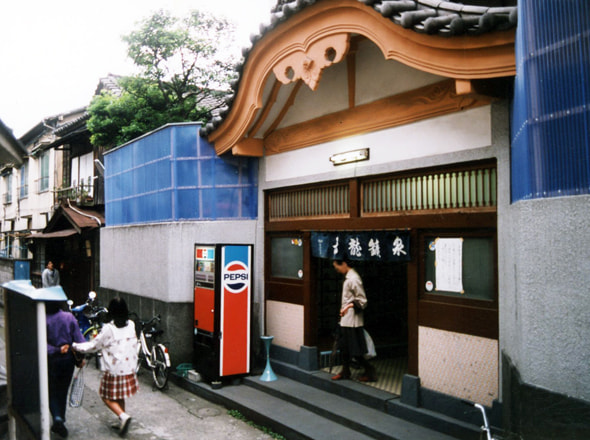
Rokuryu-kosen (Ikenohata 3-chome, Taito City)
It is said that the origin of bathhouses in Edo was "Yuya," or bathhouse attached to a temple, in the late Edo Period. The customs and fashions of the Edo Period are depicted in "Morisada Manko" that was written by Morisada Kitagawa in 1853, and it says that many bathhouses in Edo were segregated by gender, and that men and women bathed together in the Kansai district. Bathing custom was introduced to Japan in the 6th century. Also, it is said to have originated in "Mokuyoku," or ritual purification in Buddhism that became widespread through Prince Shotoku's introduction policy. Therefore, one of "Sichido-garan," or seven standard buildings of a major Buddhist temple complex, is a bathhouse. It is thought that Mokuyoku at temples originated in "Seyoku," or an act of charity to invite common people to take free baths, which was associated with missionary work of Buddhism, carried out by Empress Komyo (710-760) who encouraged building of provincial temples across the country. Therefore, it turns out that the present bathhouses' building style that gives rise to nostalgic feeling is "Miyazukuri," or temple building style, which is also discerned from a bathing scene depicted in "Ippen Shonin Eden (1299)" (owned by Kankiko-ji Temple). (continued in the lower column)
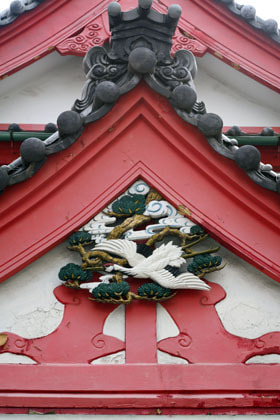
Umeno-yu (Kuramae 4-chome, Taito City)
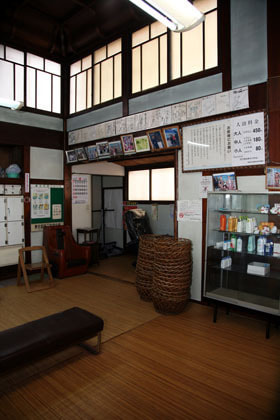
Umeno-yu (Kuramae 4-chome, Taito City)
The Miyazukuri style is reflected in not only the exterior but also the interior, including the coffered ceiling and high windows.
Although many present-day bathhouses were established after the Meiji Period and most of the buildings were built in the early Showa Period, "Akebono-yu" in Edogawa City was established in 1773, and "Konparu-yu," which is located on Konparu Street in Ginza, Chuo City, was established in the Bunkyu Period (1861 to 1863). It is said that the street was named "Konparu" because the head of the Konparu school of Noh farce lived around there in the Edo Period.
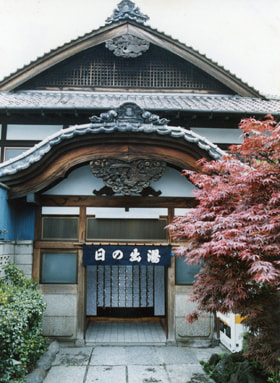
Hinode-yu (Minowa 1-chome)
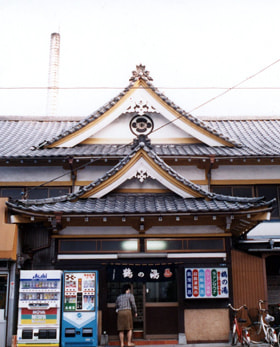
Tsuruno-yu (Asakusa-bashi 5-chome)
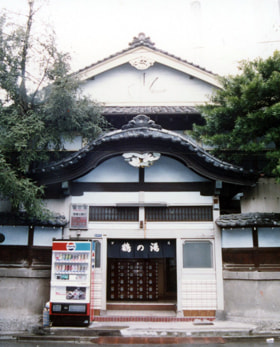
Tsuruno-yu (Higashi Ueno 5-chome)
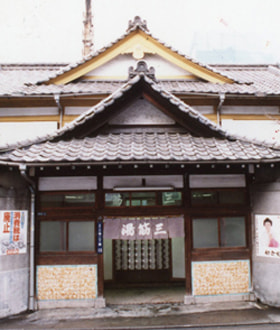
Misuji-yu (Misuji 2-chome)
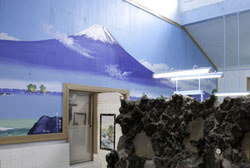
Mt. Fuji of Umeno-yu (Kuramae 4-chome)
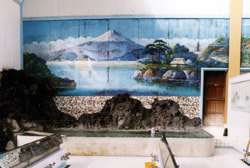
Mt. Fuji of Misuji-yu (Misuji 2-chome) [Courtesy of Taito City Photograph Association]
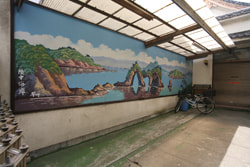
Ichiyo-sen located close to the Ichiyo Memorial Museum (Ryusen 3-chome)
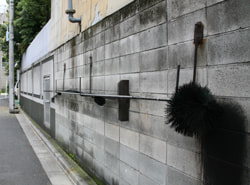
A huge broom used for cleaning a boiler is hung on the wall of Ichiyo-sen.

A chimney of Umeno-yu (Kuramae 4-chome)
It is said that the first bathhouse in Edo (present-day Tokyo) was founded by Ise no Yoichi in 1591 at the foot of the Zenikame Bridge, located between the Gofuku Bridge, which was close to the present-day Tokyo Station, and the Tokiwa Bridge. A charge for bathing was Eiraku 1 sen (1 sen = 1/100 yen). Later around 1614, bathhouses became as widespread as every town in Edo had a bathhouse. In 1975, there were 2,425 bathhouses in Tokyo, but the number has been reduced to 750 in 2012. In Taito City, there were 89 bathhouses in 1975, but only 33 bathhouses remain in 2012.

Mt. Fuji of Umeno-yu (Kuramae 4-chome)

Mt. Fuji of Misuji-yu (Misuji 2-chome) [Courtesy of Taito City Photograph Association]

Ichiyo-sen located close to the Ichiyo Memorial Museum (Ryusen 3-chome)

A huge broom used for cleaning a boiler is hung on the wall of Ichiyo-sen.














